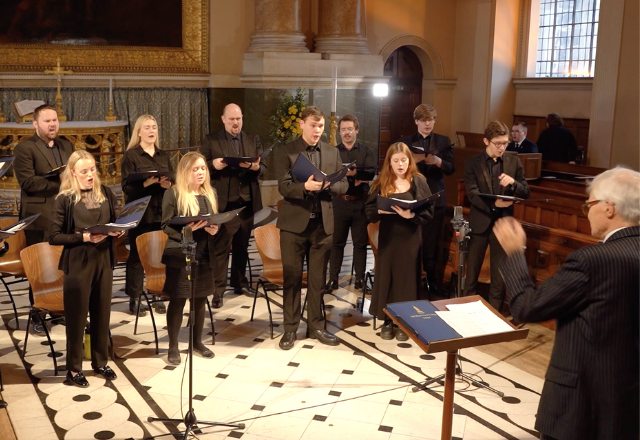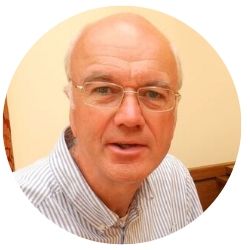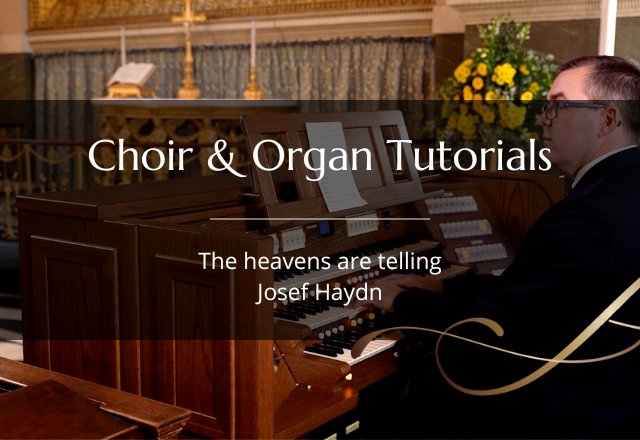In his introduction to this tutorial on Haydn’s famous chorus “The heavens are telling” from his oratorio “The Creation”, Ralph Allwood explains the piece’s origins.
Haydn visited London and was very impressed with the tradition of choirs singing oratorios, in particular Handel’s works. He decided that he’d like to write such a work too. Someone took him to see the Herschel telescope, which he looked through and saw the stars and planets for the first time. It was a completely overwhelming experience and Haydn, being a devout believer in God, decided that his first oratorio had to be about the creation.
Ralph’s theory is that Haydn wrote this particular chorus first, as it’s all about the heavens displaying the glory of God, and it provides a foundation for the entire work. Ralph likes to ask people “do you know where Haydn was inspired to write The Creation?” “No!” they say, and he replies “Slough!” (the Herschel telescope was in Slough). (This would have gone down particularly well at nearby Eton where Ralph was in charge of the music for many years.)
Challenges for both organist and choir in managing change of speed
The famous chorus starts with a statement of the main theme “The heavens are telling the glory of God, the wonder of his works displays the firmament” at a relatively relaxed tempo. Ralph encourages the choir to introduce a tiny gap at “the… heavens”, which gives the start of the phrase a lightness and drive that would otherwise be missing. There are some beautiful trio sections, the three soloists in this work representing the angels Gabriel (soprano), Uriel (tenor) and Raphael (bass).
After the first trio section, one of the challenges for both organist and choir is managing the change of speed. The second part of the chorus is at a somewhat faster pace than the first, which drives it towards an exciting conclusion, but the choir has to pick up the new speed without any messing around. It’s also important to sustain this speed to the end, but the temptation is to let it flag back towards the original tempo.

The organ part is quite “twiddly”
The organ part, like most orchestral reductions of Haydn and Mozart is quite “twiddly”, as it’s necessary to render what are essentially string parts for a lot of the time. These quaver runs don’t always fall neatly under the fingers, especially when trying to fill in some inner parts at the same time, so although there aren’t a lot of stop changes to manage some dextrous finger work is required.
There’s a lovely moment in the rehearsal when the question of an exposed tenor top A on the word “displays” is discussed, and it’s decided to split the parts between singers in a slightly different way in order to make to most of their respective ranges. As the chorus moves towards its conclusion, Haydn introduces a gradual increase in tension by the use of subtle chromatic modulations that sound as if they’re about to go to a foreign key but never stay there for more than a bar, morphing rapidly back to the home key of C major, by means of diminished and augmented chords. The music becomes ever more impetuous before reaching an emphatic conclusion.
The heavens are telling the glory of God,
The wonder of His work displays the firmament.
In all the lands resounds the word.
Never unperceived, ever understood,
ever, ever, ever understood.
The heavens are telling the glory of God,
The wonder of His work,
The wonder of His work displays the firmament.

I’m a retired academic, with a background in music and audio engineering. I’m currently a consultant for Viscount & Regent Classic Organs, as well as being a freelance organist, including a role as organist/choirmaster at St Mary’s, Witney. I sing bass with Oxford Pro Musica Singers and the Cathedral Singers of Christ Church, Oxford.




Just fabulous ! Ralph Allwood should be knighted he is a legen !. How he takes the time to explain to the choir the background behind the music. His Scholarly approach every detail .Also How Jonathan the Organist tackles the trciky organ part.